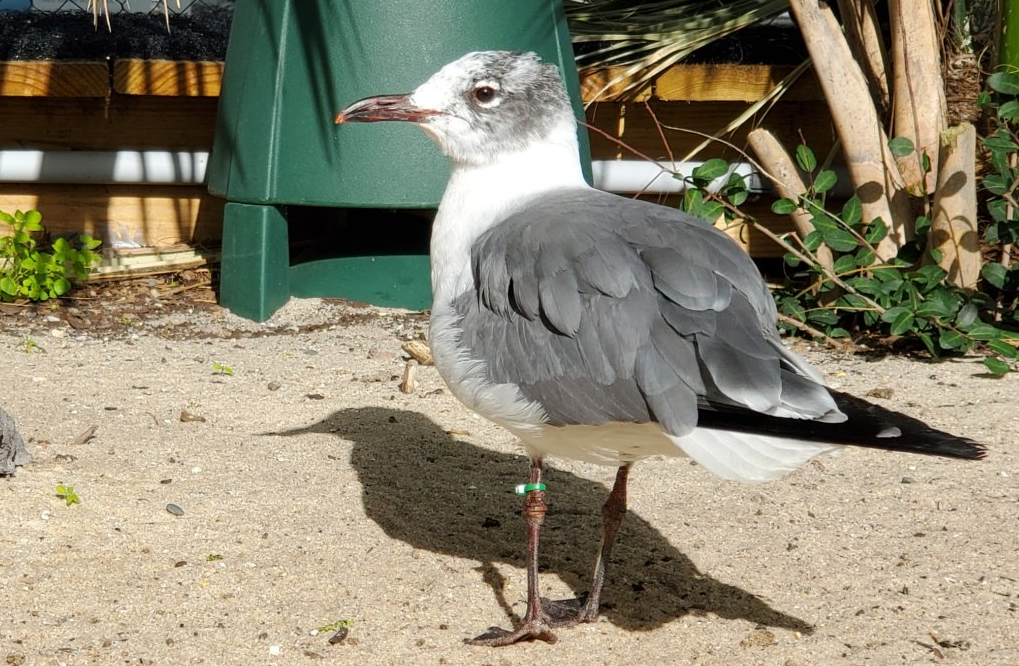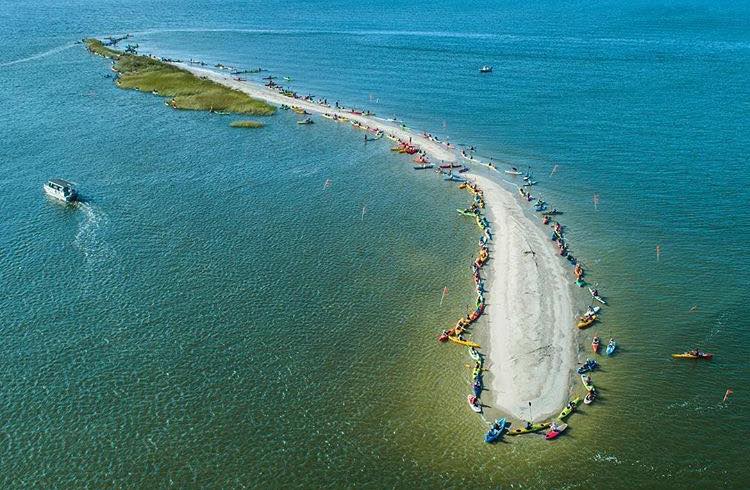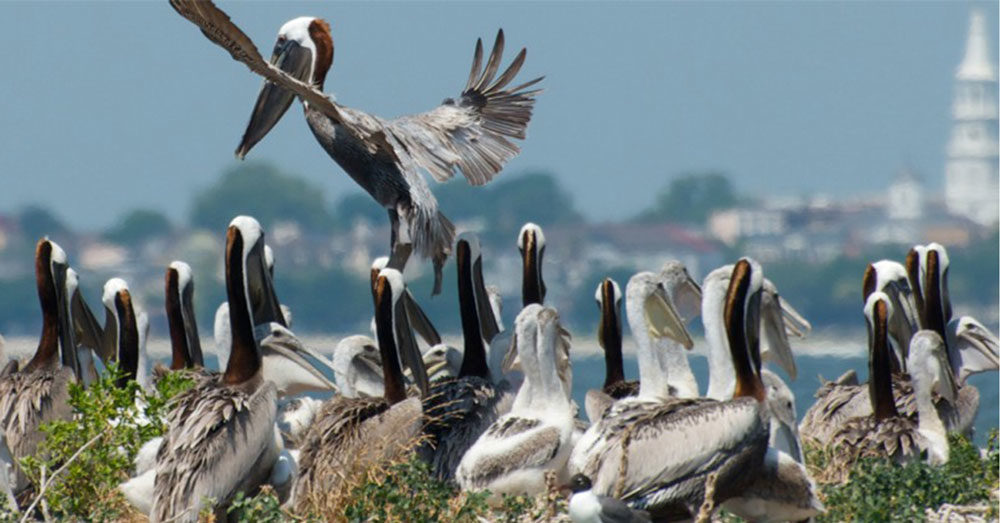If you’re not an avid birder in the Lowcountry, hearing the name “Crab Bank” may conjure images of a pristine beach filled with blue crabs, hermit crabs and even horseshoe crabs. But Crab Bank, just off of Shem Creek, is actually a vital seabird sanctuary upon which thousands of birds nest every year.
Crab Bank is what is called a rookery, a breeding ground where birds like black skimmers, terns, oystercatchers, migratory species and more gather to nest. Even birds familiar to Aquarium guests, like the seagull and brown pelicans seen in our Saltmarsh Aviary, use Crab Bank as a vital breeding ground. It is estimated that at its peak, more than 5,000 birds let loose their first tweet (no, we’re not talking about that kind of tweet) from Crab Bank!

Created in 1950, Crab Bank had served as one of five protected rookeries in South Carolina until its destruction by Hurricane Irma in 2017. In early September of that year, Irma devastated this land, leaving behind less than one acre, which was often fully submerged during high tide. Crab Bank was all but destroyed. Birds were no longer able to nest there, a palpable loss for nature lovers at the Aquarium, Coastal Expeditions and beyond. But where there is loss, there is hope.

Concerned about the future of the seabirds and shorebirds that rely on the rookery for their survival, Coastal Expeditions jumped into action and formed a coalition that included Audubon South Carolina, South Carolina Department of Natural Resources (SCDNR) and the Coastal Conservation League. The goal was simple, to save Crab Bank, but the means to get there were tough. Funds needed to be secured in order to move dredged sediment from the Charleston Harbor to Crab Bank to revive this sanctuary.
These avian advocates secured funds for the restoration of this vital land through sponsorships, donations and community support. Because of the work of a small but mighty team of government, nonprofit and Lowcountry supporters, Crab Bank is now restored to its original avian glory, with 32 acres of prime seabird and shorebird nesting ground!
The next time you visit the Aquarium and see our birds, remember the importance of rookeries like Crab Bank and the ongoing commitment to environmental conservation by organizations like the Coastal Expeditions Foundation.
And make plans to see the inaugural season of the Crab Bank baby bird boom with Coastal Expeditions… we think it’s safe to count these pelicans before they hatch! To learn more and book a tour to explore Charleston’s wild side, click below.
Brown pelican image and Crab Bank image provided by the Coastal Expeditions Foundation.


